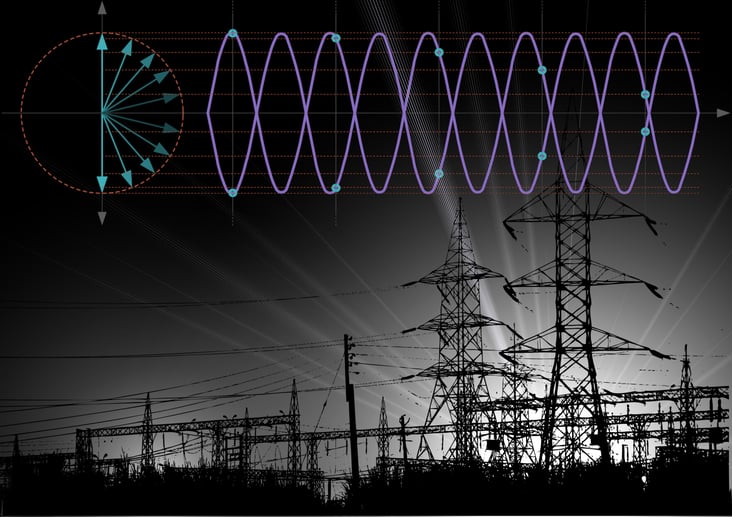This post is one in a series featuring the complete slate of advanced energy technologies outlined in the report This Is Advanced Energy.

Due to a lack of real-time data, grid operators have traditionally based grid management decisions on worst-case scenarios, resulting in inefficient performance. Over the past few years, transmission system operators have deployed synchrophasors to address this inefficiency. Synchrophasors are devices that measure the frequency, magnitude, and power factors (the alignment of voltage and current) of the grid with high speed and accuracy, then send the data back to control centers. Utilizing data time-stamped from GPS satellites, synchrophasors detect shifts in grid conditions in real time to improve management.
Synchrophasors began significant deployment in 2009, but today there are already around 1,700 synchrophasors in use in North America, providing data coverage of a significant portion of the bulk power system. Utilities and grid operators across the country have installed synchrophasors, from Idaho Power in Idaho and Oregon to American Transmission Co. in Wisconsin to Entergy in Arkansas, Louisiana, and Mississippi. Navigant Research estimates that global annual investment in synchrophasors and other technologies to improve situational awareness of the electric grid will grow from $8.5 billion in 2014 to $16.7 billion in 2023.
Synchrophasor data can be used to improve reliability and resilience by reducing the likelihood of grid disturbances. Dramatic shifts in power conditions between measurement points can signal to grid operators that something is going wrong and corrective measures are needed. When a grid disturbance does occur, accurate data help pinpoint the cause and enable a more effective response. The California Independent System Operator was able to bring a transmission line between California and Arizona back online in contradiction to standing protocol because synchrophasor data showed that conditions were safe. In post-event analyses, synchrophasor data can help assemble accurate, granular timelines of events and reactions.
Synchrophasor data can also improve day-to-day grid operations by enabling better utilization of system assets. In turn, this improved utilization allows operators to safely use a greater portion of the operational range of existing equipment, thus avoiding unnecessary upgrades. Good data can also help manage the ow of energy more efficiently to avoid congestion and minimize line losses, saving customers money. Finally, synchrophasors can help with system planning by improving the accuracy of system modeling.
Learn more about grid technology (as well as the full scope of the advanced energy industry) in This Is Advanced Energy, available for free below:
